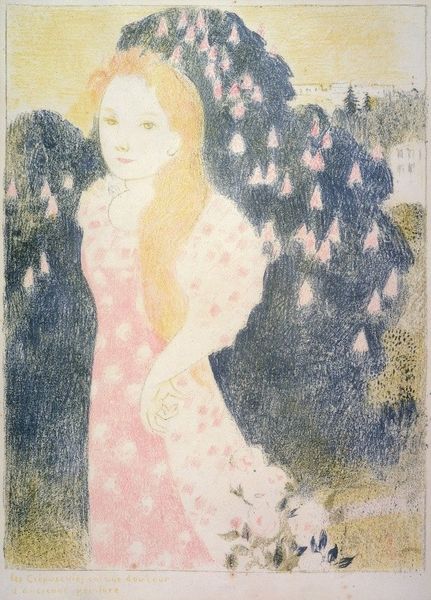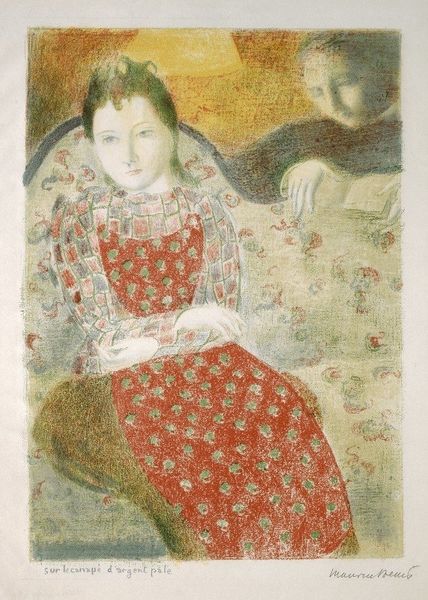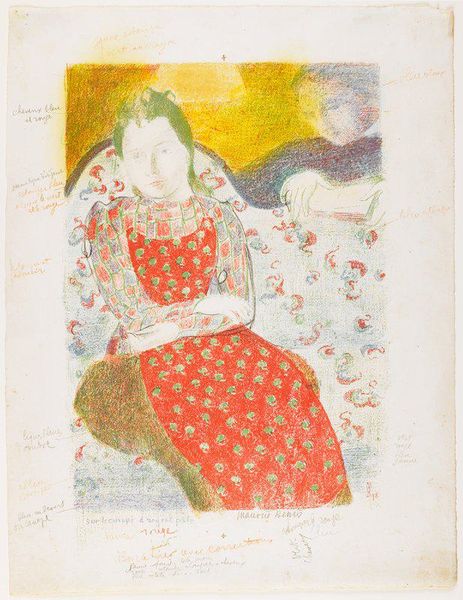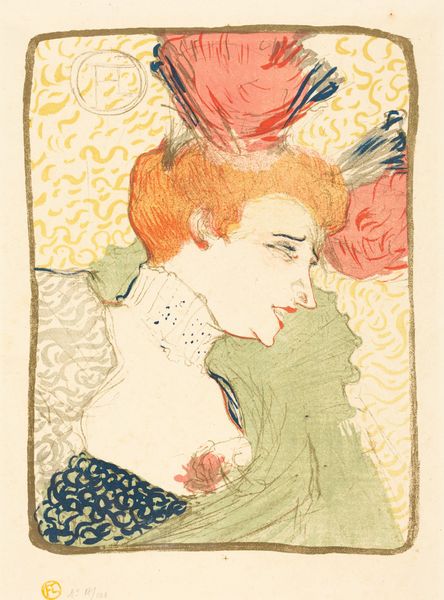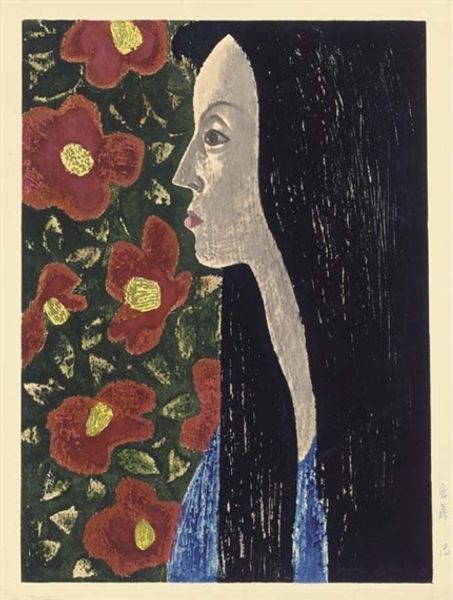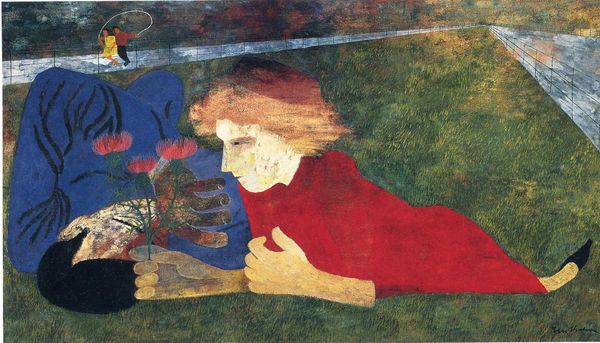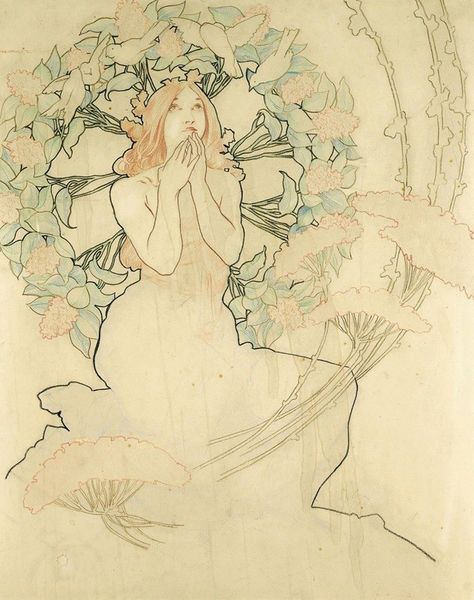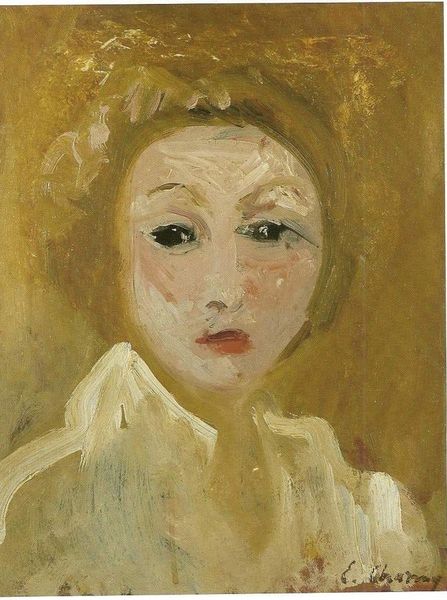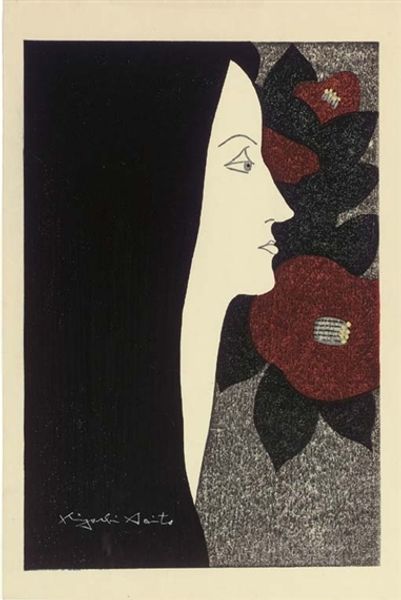
Copyright: Public Domain: Artvee
Curator: The dreamlike quality of Maurice Denis’s 1899 work, “The Attitudes Are Informal and Chaste,” immediately strikes me. Editor: Yes, there’s a strange placidity. The light watercolor imbues the scene with a gentle almost muted atmosphere, like looking through frosted glass. Curator: The piece utilizes very interesting geometry, even in its color application, don’t you think? Consider how Denis creates patterns—small strokes layered systematically to render each surface in the composition, with such flattened perspective. The trees’ repeated triangular leaf shapes, for instance. Editor: Those very repetitions—the geometry, as you say—underscore how artificial the seemingly tranquil scene is. I can't help but ask myself "chaste" according to whom? How are these qualities prescribed or perceived based on societal norms, particularly for young women at the turn of the century? It looks idyllic, but who is defining that idyll, and for whose benefit? The central girl-figure appears trapped, contained by this chaste lens of society's making. Curator: That’s an interesting point. Viewing it simply through formal composition alone, the perspective directs our gaze towards the central figure, allowing the viewer to ponder the artist’s deliberate construction. Note how Denis’s application of color—the shades of brown that delineate the trees, and that specific shade of pale yellow for the girl's skin—defines the contours without overpowering the composition. Editor: I agree. Also, the very choice of representing "informal" or “chaste attitudes” speaks volumes about the performative roles women had to embrace and what would have been considered ideal during that period in European societies. Denis places the work—and, by extension, the girl at the center—in the intersection between public perception and internalized behavior. The presence of the blue figure standing behind her possibly observing, highlights a patriarchal scrutiny imposed upon the main character, underscoring society's judgemental attitudes and a power imbalance that permeates the space around the female subject. Curator: By looking at its stylistic innovations alongside historical content, we both unveil something special and perhaps enduring about it. Editor: Exactly. And for that matter, we can really ponder the continued ramifications and relevance of works such as this one for a more complex reading of representation.
Comments
No comments
Be the first to comment and join the conversation on the ultimate creative platform.
